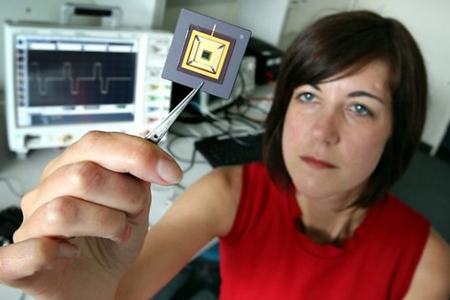BIONIC EYE Expected To Help Blind See By 2014. YEAH, SCIENCE.
Ah, this is some wonderful post-humanism shit right here. I don’t know why we aren’t vat growing organs and appendages yet (I’m sure there are good reasons, I just don’t want to know them), but this is equally outstanding. Bionic eye time! Cyeah!
PSFK:
With over 285 million visually impaired people in the world, research into restoring vision for the blind is well past its critical stage. But with innovations in technology, and by turning to a focus to even just restoring rudimentary vision, research suggests that a more expansive solution is on the near horizon. Better yet, it’s a solution that may serve as the foundation for something much more instrumental, for many more people.
A team of electrical engineers at the Monash Vision Group (MVG) of Monash University in Australia has had early success in doing just that. The group has been laboratory testing a new microchip that will be used to power a bionic eye. With pre-clinical assessments due to begin shortly, the team’s encouraging results suggest that the project is on track to deliver a direct-to-brain bionic eye implant ready for patient testing by the year 2014.
Unlike many other bionic eye projects currently in development, MVG’s bionic eye concept bypasses a reworking of the complexities of the actual eye altogether, instead consisting of a special pair of glasses with a tiny high-resolution camera that serves as a retina, and a pocket-worn digital processing unit designed for converting recorded video into electrical signals. Microchips implanted directly on the surface of the patient’s visual cortex located in the back of their brain will receive low-resolution, black-and-white images from the digital processing unit. These signals will stimulate the visual cortex, enabling the brain to build up a visual construct in a fundamental, though albeit, limited way.
According to the Director of MVG, Professor Arthur Lowery:
The aim for this vision prosthetic is to be at least equivalent to a seeing-eye dog or a white cane. While it would initially complement existing aids such as these, we believe the device eventually will replace them, and as the technology is further refined, become sufficiently sensitive to discriminate large print.
TL;DR: fucking amazing technological progress.




